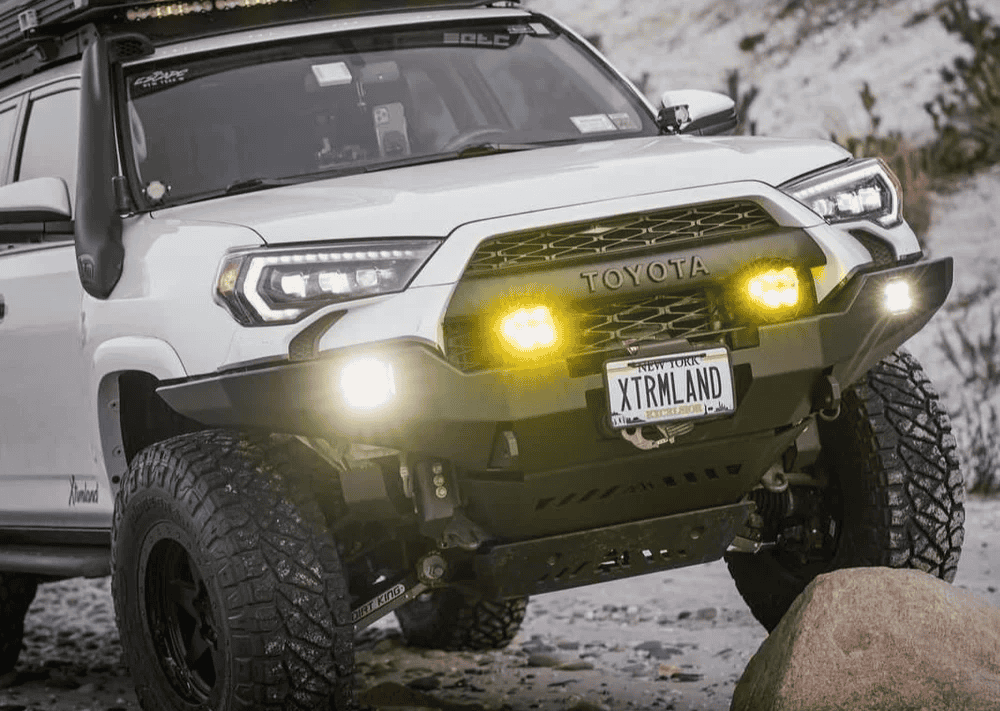Overland Vehicles

A partial overland upfit is a focused group of modifications that elevate a factory truck, van, or SUV for backcountry travel without committing to a complete build. The goal is simple. Improve capability, comfort, and safety while keeping weight, cost, and complexity under control. Instead of adding everything at once, you select the systems that matter most for your terrain, climate, and trip length.
Common upgrades start with traction and protection. All terrain tires sized appropriately for your axle ratio and brakes, paired with a matched suspension, improve clearance and control on uneven surfaces. Skid plates and recovery points protect vital components and allow safe recovery. Thoughtful lighting upgrades improve night driving and camp setup without blinding other travelers.
Power and storage come next. A compact lithium battery with a charge controller and fused distribution can support a fridge, lights, and small devices. Modular storage with tie downs prevents shifting loads and keeps recovery gear accessible. Water storage, filtration, and a simple wash station add real convenience with minimal footprint.
Prioritize changes that deliver the most return per pound and per dollar. Tires, suspension, and proper recovery points transform how a vehicle behaves on remote roads. Add lighting that avoids glare and wiring that is tidy, fused, and labeled. Choose storage that uses your vertical space and puts heavy items low and forward of the rear axle for balance.
A smart plan begins with payload. Know your gross vehicle weight rating and realistic gear list. The lighter your baseline, the better your suspension will ride and the longer your brakes will last. If towing or carrying bikes, boats, or a moto, verify tongue weight, hitch class, and rear suspension settings to avoid sag and poor handling.
Budget is easier when staged. Start with safety and traction. Add power and storage for weekend trips. Expand to water, heat, and shade once your travel rhythm is clear. Match components so they work together. A suspension tuned for added weight will ride better once storage and water systems are installed, while an electrical system sized for your fridge and lights avoids overspending on capacity you will not use.
Platform details matter. Vans offer interior volume and roof real estate but need careful weight distribution and airflow for hot climates. Trucks excel with canopy based storage and separate cargo zones but require dust management and secure tie downs. SUVs can run very lean, focusing on recovery, tires, roof storage, and a portable power solution.
Think in scenarios. If you chase desert trails with long washboard sections, choose a suspension that manages heat and add an air compressor for precise tire pressure control. If you camp in forests, emphasize lighting with warm color temperature that preserves night vision. For cold weather travel, favor reliable cabin heat and insulated storage for water lines.
Every added system should be safe, serviceable, and easy to inspect. Use rated recovery gear and mount points anchored to the frame. Electrical circuits must be fused near the source, with abrasion resistant loom and clean strain relief. Secure water tanks and use food grade hoses with quick shutoff valves. After installation, perform a shakedown drive and re torque suspension hardware once components settle.
Reliability is a habit. Keep alignment in spec after suspension work, monitor tire wear, and inspect bushings and fasteners before long trips. Carry a basic toolkit sized for your vehicle, including correct sockets for lug nuts and recovery hardware. A maintenance log helps you track torque intervals, filter changes, and battery health so issues do not sneak up during travel.
An intentional upgrade path protects your investment. Start with foundational systems, then layer comfort and convenience as you learn what your trips actually require. This avoids the weight spiral and keeps your rig agile on both highways and forest roads.
Create a pre trip and post trip checklist. Verify tire pressures, lug torque, and recovery gear condition. Test lights, fridge, and battery state of charge the night before departure. After trips, wash the undercarriage, inspect skid plates, and look for fluid seepage. Regular attention is the simplest reliability upgrade you can make.
With the fundamentals covered, you can bring in expert installation for complex items like suspension tuning, armor fitment, integrated power, and clean interior storage. If you want a team that builds purpose driven rigs every week, explore Overland rigs and see how focused packages translate to the trail. For a tailored scope that fits your schedule, take a look at our custom overland upfit approach to staged builds.
Bold moves are easier with a clear path. Our Fayetteville shop plans, installs, and validates the systems that matter, then hands you a rig that is ready for a long weekend or a cross state push. Learn what sets our process apart at why choose OZK Customs and see how we turn checklists into road miles.
Set your course and we will help with the map. OZK Customs delivers partial and complete overland upfits, full custom adventure vans, commercial and municipal platforms, power and lighting systems, roof and bed racks, suspension upgrades, armor, and clean interior storage solutions. Tell us where you want to go and we will build the capability to match.
Ready to build a capable rig without a full conversion? Tell us how you travel and we will map a focused partial upfit that fits your budget, timeline, and platform. Submit the form to schedule a consult and get a clear, itemized plan that turns your next trip into a confident departure.
ADDRESS:
6159 E Huntsville Rd, Fayetteville, AR 72701
PHONE:
(479) 326-9200
EMAIL:
info@ozkvans.com